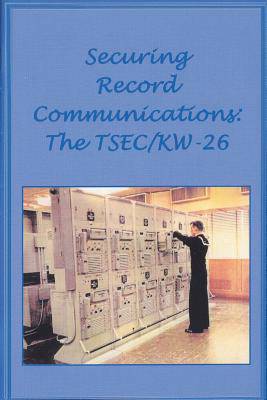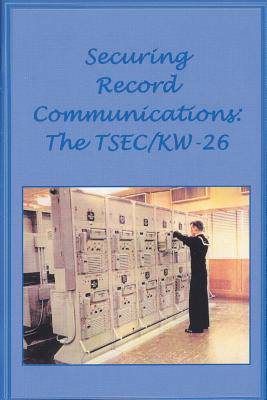
En raison d'une grêve chez bpost, votre commande pourrait être retardée. Vous avez besoin d’un livre rapidement ? Nos magasins vous accueillent à bras ouverts !
- Retrait gratuit dans votre magasin Club
- 7.000.000 titres dans notre catalogue
- Payer en toute sécurité
- Toujours un magasin près de chez vous
En raison de la grêve chez bpost, votre commande pourrait être retardée. Vous avez besoin d’un livre rapidement ? Nos magasins vous accueillent à bras ouverts !
- Retrait gratuit dans votre magasin Club
- 7.000.0000 titres dans notre catalogue
- Payer en toute sécurité
- Toujours un magasin près de chez vous
20,95 €
+ 41 points
Description
One of the missions of the National Security Agency (NSA) is to protect classified information whether in storage, processing, or transit. Collectively, information system security (INFOSEC) is the development and application of hardware, software, and doctrine. The "in transit" element, called communications security (COMSEC), assures that the underlying information is protected from external exploitation, disruption, or misrepresentation and is available only to authorized recipients. This brochure tells the cradle-to-grave story of highly successful cryptographic equipment for teletypewriter (TTY) communications, the TSEC/KW-26 and the people who developed, produced, and fielded it. The changes in communication technology leading up to the introduction of the KW-26 date back to 1907 with the introduction of the Start/Stop method of synchronizing printing telegraph equipment by Charles L. Krumm and his son, Howard Krumm. Until that time synchronous printing telegraph systems employed constant length codes, e.g., a five-element Baudot. However, these systems required very accurate means for maintaining synchronism between electromechanical transmitting and receiving instruments. "Start/Stop" overcame this drawback by resynchronizing at the start of each character, making it no longer necessary to accurately control the speed of the instruments.
Spécifications
Parties prenantes
- Auteur(s) :
- Editeur:
Contenu
- Nombre de pages :
- 24
- Langue:
- Anglais
Caractéristiques
- EAN:
- 9781478162599
- Date de parution :
- 29-06-12
- Format:
- Livre broché
- Format numérique:
- Trade paperback (VS)
- Dimensions :
- 152 mm x 229 mm
- Poids :
- 45 g

Les avis
Nous publions uniquement les avis qui respectent les conditions requises. Consultez nos conditions pour les avis.






